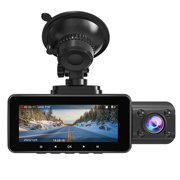The winter season is a time when most common car problems occur, so it is the time also that your car needs the most care from you. It is already difficult to deal with ice and snow when you drive, but the damages that they can do to your car is more cause for concern. Different winter car problems require different solutions. Some are meant to prevent the problems from reappearing, so you can free yourself from experiencing the hassle of car repairs during winter. These problems, if not remedied, will surely cost you in terms of time, money and effort. Find out the problems that the cold season usually bring to vehicles like cars and trucks and what you can do to solve these problems.
Snow on your car
When snow and ice hit your unprotected car, these may freeze on the windshield and wiper when not immediately brushed off. If a private garage is not an option for you, a better solution would be to get a car cover that will provide protection for your car. What we are talking about is the Lanmodo car cover.

While it is designed primarily to shield your car from the heat and UV rays of the sun during summer, it can give equal protection from ice and snow during winter. In fact, this car cover has the capability to protect your car all year round. This innovative car cover is created to be easy to handle and carry around. A simple click on your remote control will have it installed in 30 seconds and fold/unfold it in mere 8 seconds.
The Lanmodo car cover is made of military grade fiberglass for support and 210D Oxford fabric. Both are durable and sturdy materials that add to the waterproof and windproof qualities that can really protect your car from snow, ice and even dirt. After use, you can simply fold it and fit it properly in your car trunk.
Deflated tires
Driving in slippery conditions will already put you in a dangerous position, but more so, when you are driving with poor tire traction. Tire pressure drops during cold weather, so when you are driving downshift to a lower gear, make sure that you check your tire pressures periodically. A good idea is to invest in a good set of snow tires for your winter driving and replace all tires, instead of just the front or the rear.
Dead battery
Batteries require more energy during freezing temperatures and as a result of this, dead batteries are a common problem during winter. You may need to jump-start your car and this process will need another vehicle and jumper cables. It is important that you check the life of your battery and have it replaced, when it is over 3 years old. The battery connection should be kept clean and tight and should not show signs of corrosion.

Ice on the fuel line
Changing temperatures can create water moisture on the gas line and when this moisture freezes, it can prevent gas flow in your car. Always keep your gas tank full or at least half-full in the winter season. You can also add gas line anti-freeze or dry gas additive to your gas tank. It can help prevent freezing from occurring in cold temperatures. However, some gas stations are already adding anti-freeze to their gas, so it will be better, if you could check first, before you add your own additive.
Metal corrosion
Metal corrosion is when your car rust. It is the state, when the metal parts of your car start to show rust because of road salt. To neutralize road salt, wash your car with water, soap and baking soda. It will be better, if you can do it every few weeks. Washing will also prevent sediment or matters that settle at the bottom from wearing through the protective paint. Another solution to get rid of road salt that causes metal corrosion is to jack up the car and use hose to spray off the undercarriage.




